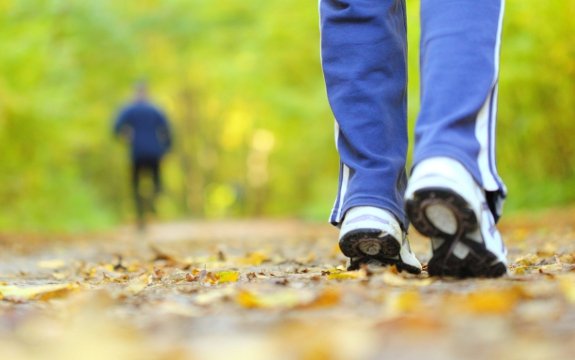Walking to Work Could Cut Diabetes Risk by 40% and More

 For more than one reason, walking or biking could be far better for us than driving – especially in the morning to avoid stressful traffic. Being in the fresh air among the singing birds has obvious benefits over road rage and exhaust, but recent research from the UK suggests walking or biking to work could significantly decrease your risk of type 2 diabetes, heart disease, and high blood pressure.
For more than one reason, walking or biking could be far better for us than driving – especially in the morning to avoid stressful traffic. Being in the fresh air among the singing birds has obvious benefits over road rage and exhaust, but recent research from the UK suggests walking or biking to work could significantly decrease your risk of type 2 diabetes, heart disease, and high blood pressure.
Researchers looked at 20,000 survey respondents from across England, taking note of their health statistics and how they traveled to and from work. Those who walked were, by many accounts, the healthiest.
Here is a breakdown of the study results.
Study Breakdown
- Those workers who walked or biked were less likely to be overweight than those who traveled by car. 19% percent of drivers were obese, compared with 15% of walkers and 13% of cyclists.
- In addition to being slimmer, walkers also had a 17% lower risk of high blood pressure.
- Most significantly, walking was tied to a 40% reduction in risk of type 2 diabetes, where cycling was tied to about half the risk when compared with drivers.
The research was published in the American Journal of Preventive Medicine.
“This study highlights that building physical activity into the daily routine by walking, cycling, or using public transport to get to work is good for personal health,” said the study’s lead researcher.
Unfortunately, if you live in the suburbs and work in the city, for instance, walking to work may be out of the question. But, fitting a daily walk in shouldn’t be. Try parking further away from your job to create that walk. Or, use half of your lunch hour to walk around the city blocks.
The key is getting active, not necessarily doing it on your way to or from work. And if you really want to benefit your health, try forest bathing – simply walking through the forest or woods, through nature.
“Next to not smoking, general regular physical activity is arguably the best thing you can do for your health,” according to the Harvard School of Public Health.
So, walk to the store, the park, your neighbor’s house, or aimlessly around the neighborhood. But, walk somewhere.
Additional Sources:
